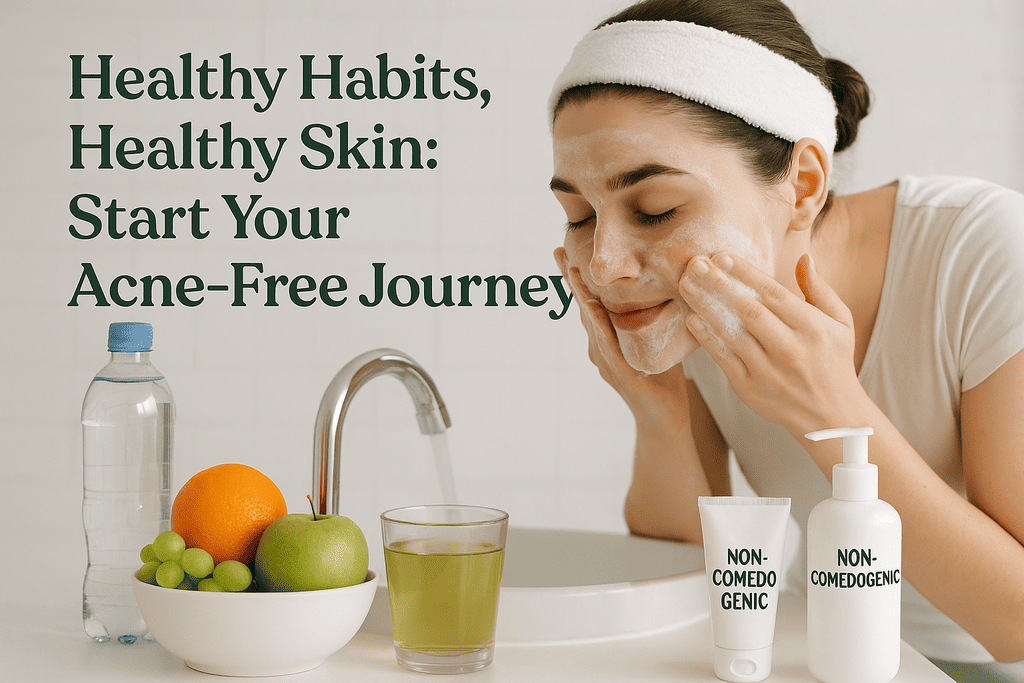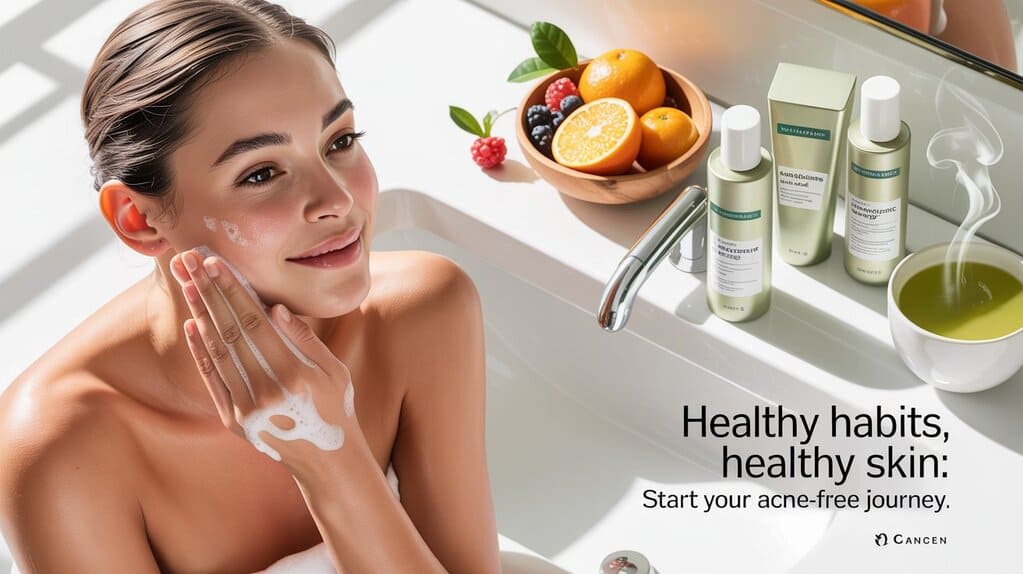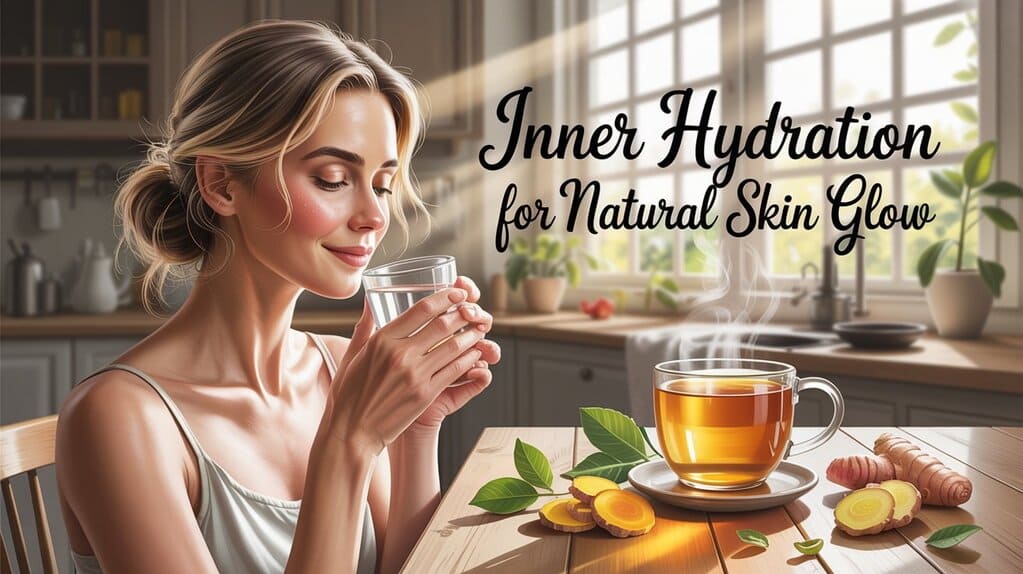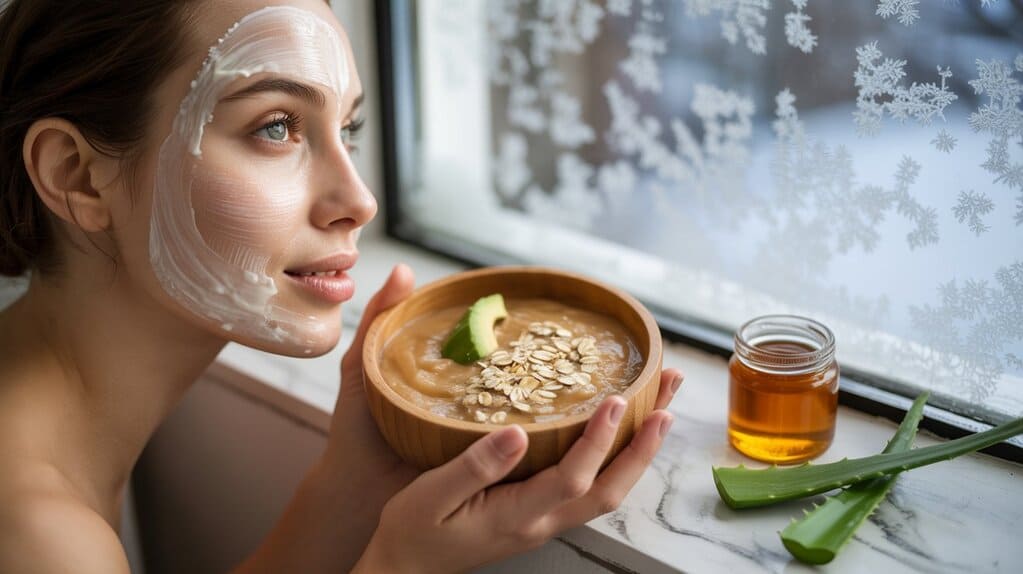
Introduction
Autumn ushers in crisp air, cozy layers—and a change in your skin’s needs. As humidity drops and indoor heating goes up, many people notice drier skin, increased sensitivity, and a tendency toward dullness or flaking. To stay radiant through the season you need a dual strategy: nourish from the inside (nutrition and supplements that support skin health) and care from the outside (targeted cleansers, moisturizers, and barrier-repair ingredients). This guide explains evidence-based nutritional and topical approaches, highlights recent scientific studies from researchers in Asia, America, and Europe, and gives practical routines and product ingredient guidance for autumn-ready skin.
Key Points
- Autumn skin challenges: increased transepidermal water loss (TEWL), dryness, irritation, flare-ups of inflammatory conditions.
- Topical priorities: repair the skin barrier, hydrate, and protect — look for ceramides, hyaluronic acid, glycerin, and gentle occlusives. PMC+1
- Nutritional priorities: adequate omega-3 fatty acids, vitamin D (especially with less sun exposure), collagen-supporting nutrients, and dietary antioxidants. Frontiers+2PMC+2
- Evidence: oral collagen, topical hyaluronic acid, ceramide-containing moisturizers, and omega-3 supplementation have clinical literature supporting benefits for hydration, barrier function, and reduced inflammation. PubMed+3PMC+3PMC+3

The Science Behind Autumn Skin Changes
As the air becomes cooler and less humid, the outermost skin layer (stratum corneum) loses water more quickly. Lipids in the stratum corneum — particularly ceramides — are crucial for a resilient barrier and water retention. When ceramide levels drop, TEWL rises, producing dryness and irritation. Recent dermatological reviews and clinical studies emphasize how replenishing lipids topically helps restore barrier integrity and relieve xerosis (dry skin). PMC+1
On the systemic side, sunlight exposure declines in autumn, which can lower cutaneous and systemic vitamin D synthesis—vitamin D has immunoregulatory roles that can affect skin inflammation and barrier function. Multiple reviews outline vitamin D’s role in skin immune responses and barrier maintenance. PMC+1
Inflammation also plays a role; diets richer in omega-3 polyunsaturated fatty acids (PUFAs) are associated with reduced skin inflammation in several dermatologic conditions, making them useful as part of a seasonal nutrition plan. Frontiers+1
Nourish from the Inside : Diet & Supplements for Autumn Skin
1. Omega-3 Fatty Acids
Why: EPA and DHA (from oily fish or algae) modulate inflammatory pathways and support cell membrane health.
How: Aim for fatty fish (salmon, mackerel) 2–3 times/week or consider a high-quality omega-3 supplement if diet is insufficient.
Evidence: Reviews suggest omega-3s may help inflammatory skin disorders and reduce inflammatory markers. Frontiers+1
2. Vitamin D
Why: Vitamin D influences epidermal differentiation and immune responses in skin. Reduced sun exposure in autumn/winter can lower levels.
How: Check serum 25(OH)D if you suspect deficiency; supplementation may be needed under clinician guidance.
Evidence: Mechanistic and clinical reviews indicate vitamin D’s role in barrier integrity and immune modulation. PMC+1
3. Collagen-Supporting Nutrition & Oral Collagen
Why: Collagen peptides and nutrients that support collagen synthesis (vitamin C, zinc, proline) can help skin elasticity and hydration over time.
How: Include vitamin C–rich fruits, lean proteins, and consider evidence-backed hydrolyzed collagen supplements.
Evidence: Systematic reviews and meta-analyses report improvements in skin hydration and elasticity with oral collagen peptides. PMC+1
4. Antioxidants (Vitamin C, E, Polyphenols)
Why: Antioxidants protect skin from oxidative stress that contributes to dullness and aging.
How: Eat a colorful diet (berries, leafy greens, nuts) and consider topical antioxidants (stable vitamin C serums) in the morning routine.
Evidence: Nutritional and topical antioxidant literature supports protection against oxidative damage and improved skin appearance (see reviews in dermatologic nutrition literature). MDPI+1
Care from the Outside : Autumn Topical Routine
Follow a gentle but effective routine focusing on barrier repair, hydration, and protection.
Morning
- Gentle, non-stripping cleanser (avoid harsh surfactants).
- Antioxidant serum (stable vitamin C) if tolerated.
- Humectant serum with hyaluronic acid or glycerin to attract moisture. PMC+1
- Moisturizer containing ceramides, cholesterol, and fatty acids (these three together support barrier lipids). PMC+1
- Broad-spectrum sunscreen — UV exposure continues in autumn and sunscreen is essential year-round.
Evening
- Double-cleanse only if wearing heavy makeup; otherwise a gentle cleanse.
- Hydrating serum (hyaluronic acid).
- Thicker moisturizer or occlusive (petrolatum, dimethicone, or plant-based oils) if skin is very dry — this locks in hydration overnight.
- Targeted actives as needed (short-term tretinoin or retinoid under clinician guidance; introduce carefully in low-humidity months).
Special considerations: For sensitive or atopic skin, prioritize fragrance-free, ceramide-rich formulations and avoid over-exfoliation during dry months. Clinical trials show ceramide-infused topicals improve barrier function and reduce xerosis. PMC+1

Quick Reference Table : Nutrients & Topical Ingredients for Autumn Skin
| Category | Key Ingredients | Primary Benefit | Evidence / Notes |
|---|---|---|---|
| Topical humectant | Hyaluronic acid, glycerin | Attracts and holds water in epidermis | Clinical trials show HA serums improve hydration. PMC |
| Barrier lipids | Ceramides, cholesterol, fatty acids | Restores barrier, reduces TEWL | Multiple studies/reviews support ceramide-containing moisturizers. PMC+1 |
| Anti-inflammatory fats | Omega-3 PUFAs | Lowers skin inflammation | Systematic reviews show benefits in inflammatory skin disorders. Frontiers |
| Structural support | Oral collagen peptides + vitamin C | Improves elasticity & hydration over weeks | RCTs & meta-analyses indicate modest benefits. PMC+1 |
| Immune regulator | Vitamin D | Modulates skin immunity & barrier | Reviews highlight vitamin D’s role; check levels before supplementing. PMC |
Practical Autumn Skincare Plan
- Daily: Gentle cleanse, hyaluronic acid serum, ceramide moisturizer, sunscreen.
- Twice weekly: Mild enzymatic or low-concentration AHA exfoliation only if skin tolerates — avoid over-exfoliation.
- Weekly: Rich mask or overnight occlusive treatment if skin is flaky/dry.
- Nutrition: Two servings of oily fish per week (or omega-3 supplement), a vitamin C–rich fruit daily, and consider an evidence-based collagen peptide supplement for 8–12 weeks to assess results. Monitor vitamin D in low-sun months and supplement if deficient. Frontiers+2PMC+2
Recent Studies & Voices from Asia, America, and Europe
- A systematic review on hydrolyzed collagen supplementation (2023) found improvements in skin hydration and elasticity when taken over weeks to months; authors included researchers synthesizing trials from multiple regions. PMC
- Clinical research and reviews published in European dermatology journals emphasize ceramide topical therapy for barrier repair and symptom relief in dry skin and atopic dermatitis. Wiley Online Library+1
- North American dermatologists and clinical trials have documented the hydration benefits of topical hyaluronic acid serums and practical formulations for improved skin quality. Z.D. Draelos’ studies are examples of clinical serum evaluations. PMC
- Reviews and studies led by researchers across Asia and Europe have explored vitamin D’s immunomodulatory roles and the therapeutic applications of omega-3 fatty acids in dermatology. PMC+1
These cross-continental findings converge on the same practical conclusion: combine dietary support with targeted topical ingredients for the best autumn outcomes.
Common Questions
Q: Should I stop active treatments (retinoids, acids) in autumn?
A: Not necessarily, but reduce frequency if you experience increased dryness or irritation. Pair with a robust moisturizing and barrier repair routine. Introduce or continue retinoids slowly and consult your dermatologist for prescription-strength products.
Q: Do I need vitamin D supplements every autumn/winter?
A: Not automatically. Serum testing (25-OH vitamin D) is the reliable way to determine need; supplementation should be individualized. Reviews highlight mixed trial results, but vitamin D’s mechanistic role in skin health is supported. PMC
Conclusion
Autumn skin care blends science and seasonality: protect and restore your skin barrier with ceramides, humectants like hyaluronic acid, and occlusives when needed, while supporting skin health from within via omega-3 fatty acids, collagen-supporting nutrients, and appropriate vitamin D levels. Recent clinical literature from Asia, America, and Europe consistently supports a combined topical + nutritional approach for maintaining hydration, reducing inflammation, and preserving skin quality as humidity drops. Adopt a gentle routine, prioritize barrier repair, and choose evidence-backed ingredients to keep your skin healthy, comfortable, and glowing throughout autumn.
Selected References & Further Reading
- Pu SY, et al. Effects of Oral Collagen for Skin Anti-Aging: A Systematic Review. 2023. (PMC). PMC
- Draelos ZD, et al. Efficacy Evaluation of a Topical Hyaluronic Acid Serum in Improving Skin Hydration. 2021. (PMC). PMC
- Baker P, et al. Skin Barrier Function: The Interplay of Physical, Chemical… 2023. (PMC). PMC
- Takagi Y, et al. Efficacy of Topical Application of a Skin Moisturizer… 2024. (PMC). PMC
- Thomsen BJ, et al. The Potential Uses of Omega-3 Fatty Acids in Dermatology. 2020. (PubMed). PubMed
- Sawada Y, et al. Omega 3 Fatty Acid and Skin Diseases. Frontiers in Immunology. 2021. Frontiers
- Myung SK, et al. Effects of Collagen Supplements on Skin Aging: Meta-Analysis. (AM J Med / related 2024–2025 analyses). AMJ Medicine+1
- Li Q, et al. Vitamin D and skin disorders: bridging molecular insights. 2025. (PMC). PMC+1
- Bravo B, et al. Benefits of topical hyaluronic acid for skin quality and signs. 2022. (PMC). PMC
- Schild J, et al. The role of ceramides in skin barrier function and … 2024. (ICS/Wiley). Wiley Online Library





